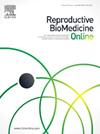数字遥控ICSI系统:首例活产病例报告
IF 3.7
2区 医学
Q1 OBSTETRICS & GYNECOLOGY
引用次数: 0
摘要
研究问题:一个完全自动化的、数字控制的、远程操作的系统能否执行卵胞浆内单精子注射(ICSI)的整个显微操作过程?设计了一个自动化ICSI 23个微操作步骤的工作站。该系统在人工智能控制或由远程操作人员执行的数字控制下独立运行。通过动物模型进行临床前验证,确保安全性和有效性。在临床应用中,5个供体卵母细胞用于治疗一名40岁的患者,在远程监督下使用自动ICSI系统受精;另外手工注射3个卵母细胞作为对照。进行选择性单胚胎移植。结果自动ICSI系统的受精率为80% (n = 4/5),与人工控制(100%,n = 3/3)相当。每组产生2个可用囊胚。使用实验胚胎的新鲜胚胎移植没有导致怀孕。然而,从自动ICSI组转移一个温暖的囊胚导致妊娠38周的健康活产。该系统自主完成了所需的115个微操作步骤中的49.6%(每个卵母细胞23个),其余步骤由远程操作员在数字控制下进行。自动注射卵母细胞的平均时间为9 min和56 s。初始设置需要现场人工干预,并且有一次需要对自动化步骤中的一个进行故障排除。结论:本研究证明了全自动、远程操作ICSI实现活产的可行性。虽然需要提高自主性和效率,但这一里程碑凸显了自动化系统在改变全球辅助生殖技术实践、提高可及性和标准化方面的潜力。本文章由计算机程序翻译,如有差异,请以英文原文为准。
A digitally controlled, remotely operated ICSI system: case report of the first live birth
Research question
Can a fully automated, digitally controlled, remotely operated system execute the entire micromanipulation process of intracytoplasmic sperm injection (ICSI)?
Design
A workstation automating the 23 micromanipulation steps of ICSI was engineered. The system operated independently under artificial intelligence control or under digital control executed by a remote operator. Pre-clinical validation was conducted with animal models to ensure safety and efficacy. In a clinical application, five donor oocytes intended for the treatment of a 40-year-old patient were fertilized using the automated ICSI system under remote supervision; three additional oocytes were injected manually as controls. Elective single embryo transfers were performed.
Results
The automated ICSI system achieved an 80% fertilization rate (n = 4/5), comparable with the manual controls (100%, n = 3/3). Two usable blastocysts were generated in each group. A fresh embryo transfer using an experimental embryo did not result in pregnancy. However, the transfer of a warmed blastocyst from the automated ICSI group resulted in a healthy live birth at 38 weeks of gestation. The system completed 49.6% of the required 115 micromanipulation steps (23 per oocyte) autonomously, and the remaining steps were conducted under digital control by the remote operator. The average time for automated injection of an oocyte was 9 min and 56 s. On-site human intervention was required for the initial set-up, and was needed on one occasion for troubleshooting one of the automated steps.
Conclusions
This study demonstrates the feasibility of fully automated, remotely operated ICSI achieving a live birth. While improvements in autonomy and efficiency are needed, this milestone highlights the potential for automated systems to transform assisted reproductive technology practices globally, enhancing accessibility and standardization.
求助全文
通过发布文献求助,成功后即可免费获取论文全文。
去求助
来源期刊

Reproductive biomedicine online
医学-妇产科学
CiteScore
7.20
自引率
7.50%
发文量
391
审稿时长
50 days
期刊介绍:
Reproductive BioMedicine Online covers the formation, growth and differentiation of the human embryo. It is intended to bring to public attention new research on biological and clinical research on human reproduction and the human embryo including relevant studies on animals. It is published by a group of scientists and clinicians working in these fields of study. Its audience comprises researchers, clinicians, practitioners, academics and patients.
Context:
The period of human embryonic growth covered is between the formation of the primordial germ cells in the fetus until mid-pregnancy. High quality research on lower animals is included if it helps to clarify the human situation. Studies progressing to birth and later are published if they have a direct bearing on events in the earlier stages of pregnancy.
 求助内容:
求助内容: 应助结果提醒方式:
应助结果提醒方式:


